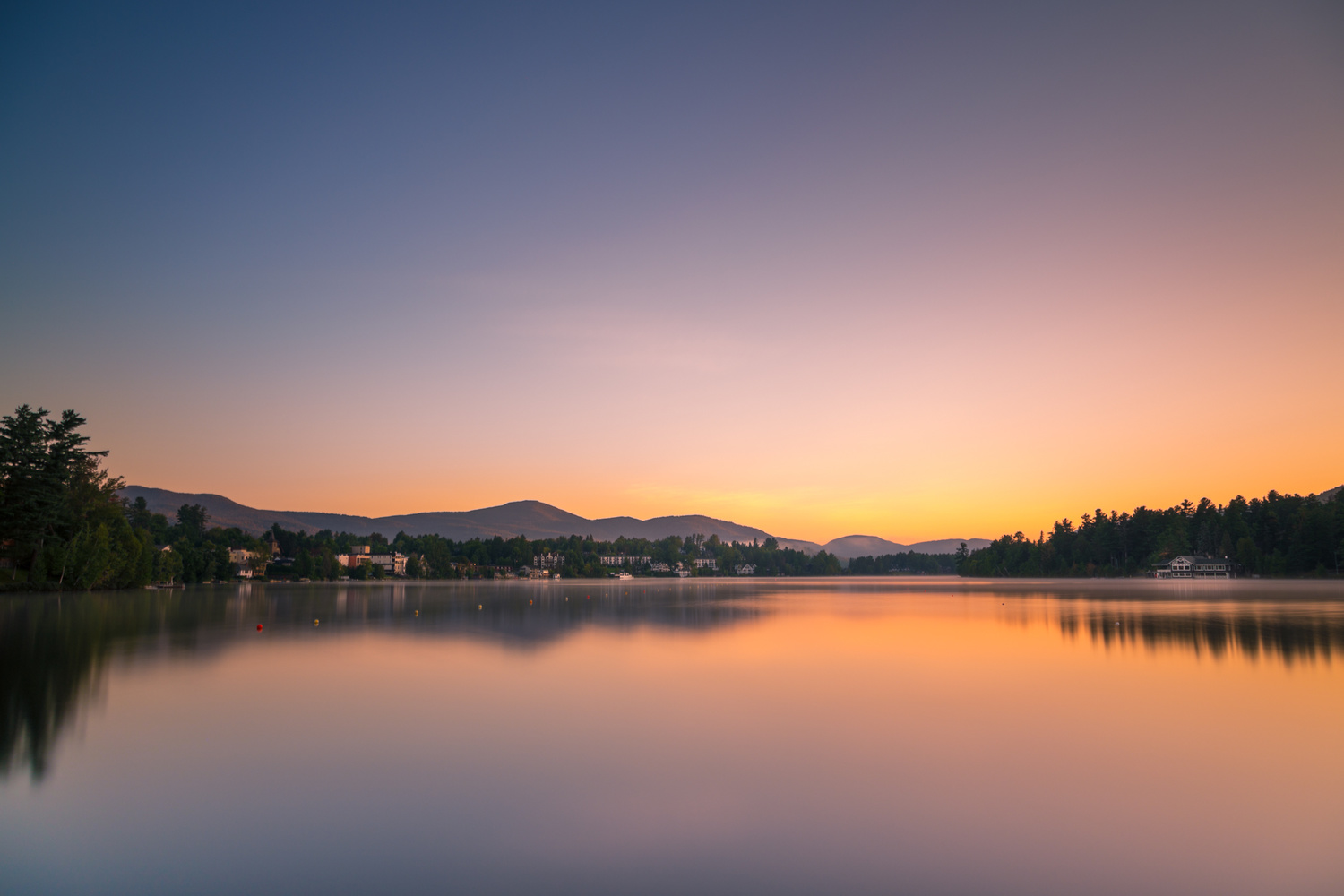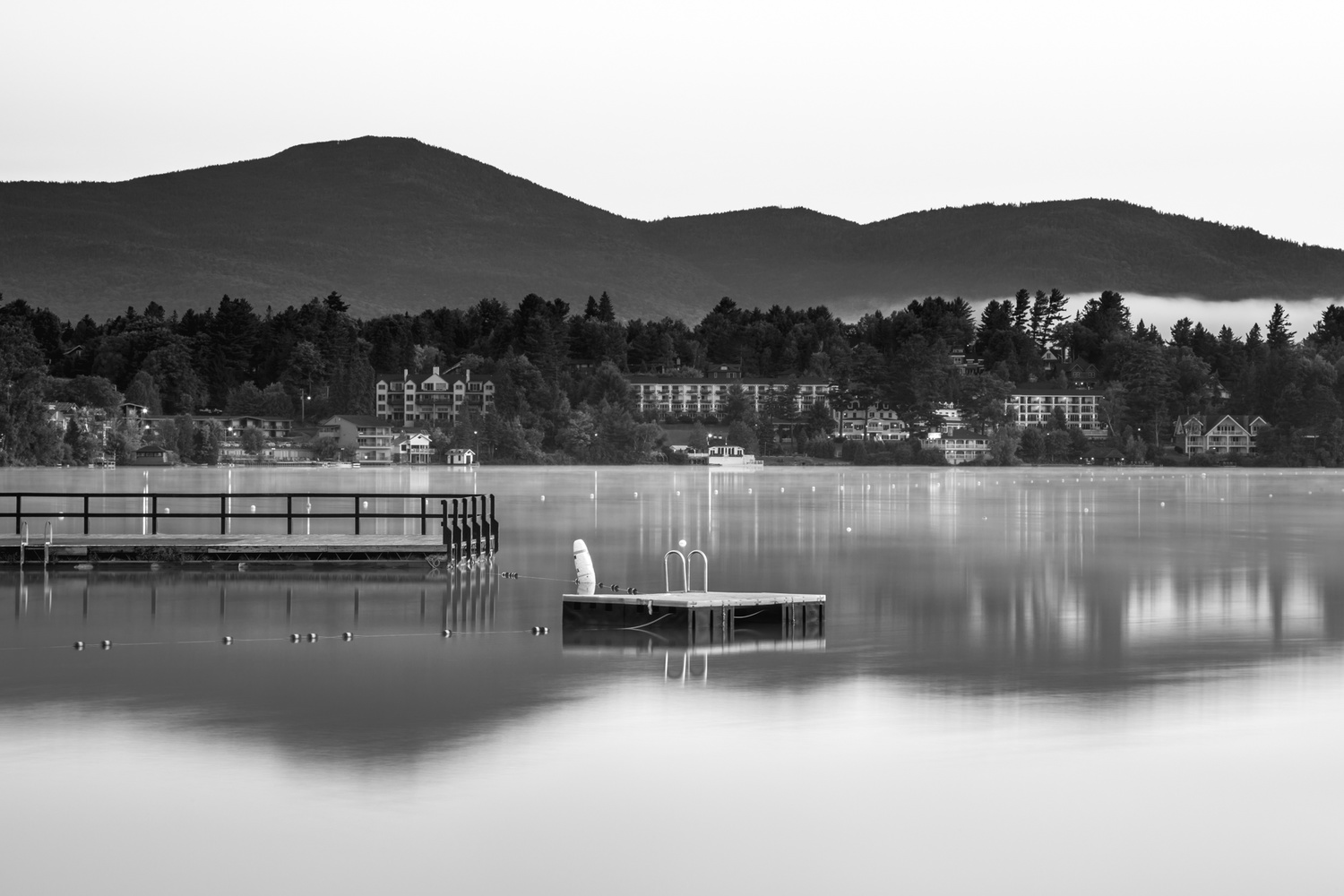One of my goals as I started taking photography more and more seriously was to shoot a sunrise. Although it seems easy enough to just "get up early and bring a camera," I've found more often than not if you aren't prepped, you'll sleep in. Join me in a walk through three of my successful sunrise shots!Like a sunset, you really never know if a sunrise will be spectacular or nonexistent until you get out there and take a look. Obvious things like if it is raining, or clouds are covering everything come into play. More often than not though, there will be no better light than at daybreak.
Part of my challenge is what we'll call the plight of the ninja. If I'm overheard leaving the hotel room in the morning and the kids wake up - it's game over, or at least some serious point deductions for bad form. Because of this, planning ahead is key, since performing even simple tasks at 4:45 a.m. without coffee can prove next to impossible you're better off doing everything the night before.
For me I have these key components:
- Canon 6D
- B+W 10 Stop ND Filter (although lately I've been having good luck with a cheap alternative I found on Amazon made by ICE)
- my trusty Vanguard Tripod with a "gee I hope they don't think it's a gun" pistol grip head
- Shutter Release
- Memory Card
- Charged Battery
Although that list may seem obvious, it is good to go over things a few times and double check because not only will you be tired in the morning but you'll be racing the best light. You also should have your clothes and any weather related gear ready and staged. I really missed gloves shooting in -27 degree wind chill one morning, but that is another story, literally, part two coming soon.
Photography became a huge part of my life as self-prescribed therapy when I suddenly lost my Dad to multiple myeloma cancer in 2011. Google+ had just launched with a new photo-centric community, and I was seeing all kinds of stunning photos that didn’t look like anything I’d seen before. I circled/followed every cool photographer I could, and ultimately began taking my own photos. After sipping the HDR kool-aid early on I quickly graduated to long exposure photography after simply asking "How did you get the water to look like that?" on someone's shared photo. It felt like the sea turtle from Finding Nemo was yelling to me: "You've got to get yourself an ND filter dude!"
Neutral Density filters can simply be described as really, really dark glass. Like a welding mask if you've ever seen that, I've actually read articles suggesting trying those to save some money. Once you are using the ND filter you are able to stretch a split second exposure into a number of second or even minutes. It can be a bit of a tricky process very dependent on capturing fairly even light throughout the composition so you don't blow out highlights from too much light, or underexpose shadows completely leaving no detail. I find that you need one thing in almost all long exposures to make them worth the effort. That one thing is motion, whether it be clouds, car lights, or my favorite water. Capturing this motion over a long exposure creates something our eyes simply cannot see. You get cool laser looking light trails from headlights. Long exposure clouds can create direction and add drama to an image. And water creates a foggy (for waves) or glass like surface for water ripples. I think it is capturing this unseen world that we cannot imagine is what got me hooked right away.
My first successful sunrise shoot took place in beautiful Lake Placid, NY home of the 1980 Winter Olympics and the location of the legendary "Miracle on Ice." We stayed at the Hampton Inn & Suites Lake Placid which is right across the street from Mirror Lake. This basically meant I was spoiled by the ideal location, conditions, and of course hot coffee and morning snacks right in the lobby! I would recommend picking your spot the night before so you are not driving around looking for a better spot, only to fall back to the obvious shoreline across the street.

You have to take a shot including an Adirondack Chair or the local law enforcement will show up and confiscate your camera.
After sneaking out like a ninja (not easy with the industrial strength hotel doors and latches these days) I made my way to the water. There was only me, some ducks, the perfectly calm water, and my gear!
Many people who shoot long exposure carry with them exposure calculators and/or light meters. There are apps for smart phones as well that will take your current exposure without the filter like f/8.0, ISO100, 1/100th second - and tell you you can achieve the same exposure with your ND filter by going for 25 seconds. I prefer not to use these and to start with a simple 10 second exposure and adjust from there. Usually adjustments happen in 10 second increments or simply in f/stops. If a shot is coming in overexposed at 30 seconds at f/8 but I like the blurring effect at that exposure time and can simply dial the f/stop up to 10, 14, or even 22. Each stop basically doubles the exposure time. You can use your LCD screen to preview the exposures but be sure to include the histogram too to make sure you're not leaning to far to the right (overexposed) or the left (underexposed). I actually prefer to be on the underexposed side since shadows look on in an image while blow out highlights can often be un-repairable without going full composite mode and swapping parts of the image out.
So as I'm doing my long exposures and stranger walks up and starts asking about my gear. I could tell right away he knew what he was talking about, so I filled him in on what I was up to. The man's name was Greg Craybas. He has a successful dental practice in Syracuse, NY (Go Orange!) with an impressive portfolio of wildlife photography. We were talking about getting up to Whiteface Mountain for some shots later in the day. I was immediately out skilled and out gunned when he pulled out the Photographer's Ephemeris and showed me what side of the trees the sun would be shining on when he planned on being there. This was higher level thinking and shot planning than I was used to. Needless to say I was impressed enough to make sure and look up his site later that day.
Besides just meeting and talking with Greg, I can 100% credit him with telling me to get the above shot. I was busy capturing probably my 10th long exposure in the same spot out on the dock when he saw a standing paddle boarder coming in from a distance. He said "Ooh, that will make for a great shot!" At first I had no intentions of unscrewing my ND filter, but then after reflecting for a moment, and realizing why not I took off the filter and captured one of my favorite shots and a rare one for my portfolio since it included a person! Funny side note: When I shared the image on Twitter an Adirondack Ranger pointed out the boarder should be wearing a floatation device by law! Busted!
So besides capturing some of the most beautiful light of the day, having the area to yourself, and enjoying the sounds and smells of daybreak, you might just learn something! It is hard to describe the therapeutic quality of doing this. I felt close to nature. I felt accomplished. I was ready to do it again! So come back and read about my next sunrise, it is quite a story. I'll give you a hint: -27 degree wind chill...
![There Is Nothing Like Photographing a Sunrise [Part 1]](https://cdn.fstoppers.com/styles/large-16-9/s3/lead/2017/03/sunrise_photography_adk_lake_placid_mirror.jpg)
















Thanks, I'll give this a try when I go to the coast of Maine this summer.
Loved the "plight of the Ninja" comment. For me, it's my dogs. Seven days a week, when I get up, we go for a walk. These aren't "around the block" walks. They last up to 2 hours long! No sneaking past those guys. :-)
Didn't really understand the need for an ND filter, though. Especially 10 stop. I use them for a lot of things but never sunrise or sunset. If I did, I would use a square filter so I could blend a long exposure with a short exposure to blur some objects but not others.
Thanks! I use the ND filter to push the exposures out to 60, 90, 120+ seconds. That's when you start getting into the look I'm often going for. Someday I'll have some square filters :)
They're definitely a financial commitment. :-(
Nice
Nothing like waking up at ungodly hours of the morning for a chance a great photo. This one was taken at around 5AM on 1/1/17
Agreed! Great shot to prove it :)
Michael,
Do you have your white balance set to daylight or auto?
I haven't done below zero degree shooting. I had a sunrise project to photograph the sunrise on the equinoxes and solstices of Columbia, South Carolina from the Lake Murray dam. The winter sunrise was brutal; the wind gusting off Lake Murray was probably 45 MPH,
I apologize I missed this Ralph. I shoot on auto WB.
Thank you for an interesting article, Michael. I'm planning two trips this year - Rovinj and Tromso. Definitely wanna try and get up early for some nice sunrise shots. Though, I have a question about ND filter. I have ran into this article https://breakthrough.photography/pages/nd-buying-guide where it says 10-stop ND filter shouldn't be used for shooting sunrises and sunsets and shooting during golden hour in general. What do you think? I don't have grad ND filter, neither 6stop ND filter. I only have CPL and 10-stop ND... Which one would be better, do you think? I noticed you used 10 stop filter as well and your shots are amazing ;-)
I guess the advice might be for more traditional captures. I really like pushing the exposures so you end up with something almost surreal our eyes really can't see. If you can afford to grab some alternative filters to try out I would suggest it, but you can certainly make some awesome shots with a 10-stop. Thanks very much!